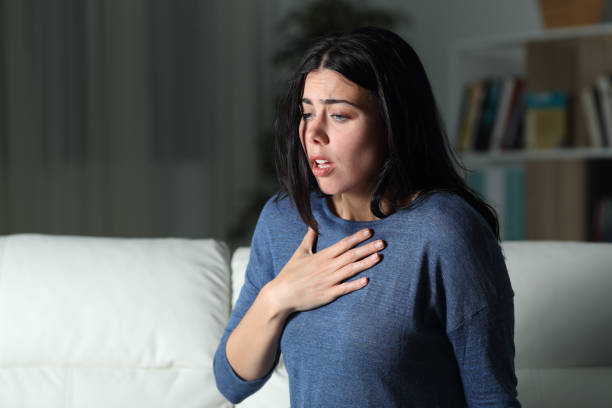Anxiety and panic attacks
People might talk about anxiety attacks and panic attacks as if they were the same thing. However, they are two different things.
What is an anxiety attack?
Although the DSM-5 doesn’t mention anxiety attacks, it does describe the anxiety, which is a common feature of many psychiatric disorders.
What is a panic attack?
Panic attacks occur suddenly and can cause intense, overwhelming fear. These attacks can be accompanied by severe physical symptoms such as racing heartbeats, shortness or nausea.
The Diagnostic and Statistical Manual of Mental Disorders 5 (DSM-5) has been updated to recognize panic attacks and classify them as either unexpected or expected.
Unexpected panic attacks can occur without any obvious cause. Expected panic attacks can be triggered by external stressors such as phobias.
Although panic attacks can occur to anyone, having more than one could indicate panic disorder.
Anxiety symptoms include:
- Beware
- distress
- Fear
Anxiety can be caused by the fear of a stressful situation or experience. It can happen gradually.
Anxiety attacks are not diagnosed and the symptoms can be misinterpreted.
This means that a person can describe an “anxiety episode” and experience symptoms that are not present in another person, even though they have also experienced an “anxiety attacks.”
Symptoms
Panic attacks and anxiety attacks can feel very similar and share many physical and emotional symptoms.
It is possible to experience anxiety and panic attacks simultaneously.
It can be hard to tell if you are experiencing anxiety or panic attacks. Consider the following:
- Anxiety is usually related to stressors or threats. Panic attacks don’t always occur when stressors are present. Most often, panic attacks occur completely out of the blue.
- Anxiety may be mild, moderate or severe. As you go about your daily activities, anxiety could be present in your back. Panic attacks are more severe and disruptive symptoms.
- Panic attacks trigger the body’s natural fight-or flight response. Anxiety symptoms can often be more severe than the physical symptoms.
- Although anxiety can build slowly, panic attacks often occur suddenly.
- Panic attacks can often trigger fears or worries about another attack. This can have an impact on your behavior and cause you to avoid situations or places where you are at risk for panic attacks.
Causes
There are no external triggers for unexpected panic attacks. Similar triggers can cause anxiety and panic attacks. These are some common triggers:
- a stressful job
- Driving
- Social situations
- Fears such as agoraphobia (fear crowded or open spaces), claustrophobia(fear small spaces), and Acrophobia (fear heights) are all examples of phobias.
- Memories or reminders of trauma experiences
- Chronic illnesses include heart disease and diabetes. irritable stool syndrome. asthma.
- Chronic pain
- Withdrawal from alcohol or drugs
- caffeine
- Supplements and medication
- thyroid problems
Risk factors
Panic attacks and anxiety have similar risk factors. These risk factors include:
- Witnessing traumatizing events as a child, or as an adult.
- A stressful life event such as the death or divorce of a loved ones can be very distressing.
- Constant stress and worry, such as about work responsibilities, family conflict, or financial woes, can be a sign of ongoing stress.
- Living with a chronic illness or life-threatening condition is difficult
- An anxious personality
- Having another mental disorder such as depression
- Having close relatives with panic or anxiety disorders
- Consuming alcohol or using drugs
Panic attacks are more common in people who suffer from anxiety. Anxiety does not necessarily mean that you will have panic attacks.

